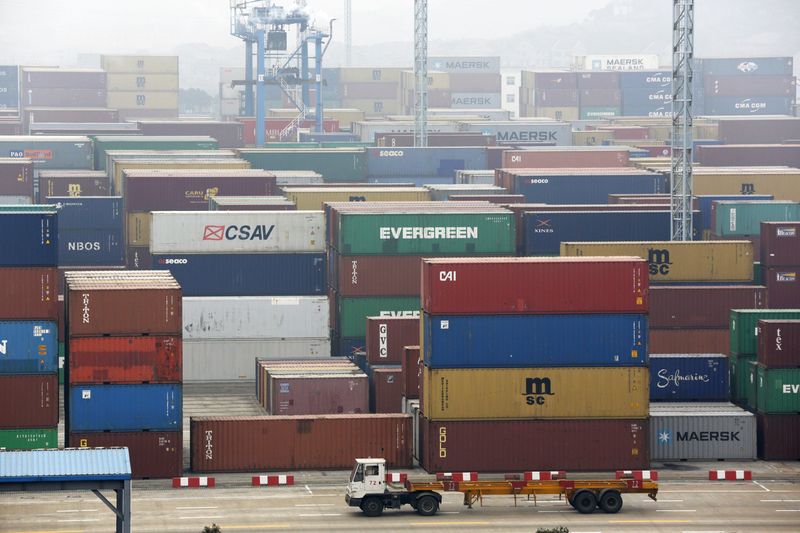BEIJING (Reuters) - China's consumer price inflation likely slowed to a five-year low in January due to falling oil prices and sluggish demand, while export growth was seen sagging, a Reuters poll showed, raising questions whether more policy stimulus is needed to combat deflationary pressures.
The median forecast of 21 analysts showed annual export growth probably slowed to 6.3 percent in January, down from December's 9.7 percent.
Data out of China during January and February is typically skewed by the impact of the Lunar New Year holiday, making it hard to assess the trends in the world's second-largest economy, after it grew 7.4 percent in 2014 - its slowest rate in 24 years.
China's export numbers tend to be erratic in any case, and estimates for January's performance varied widely between 10 percent growth to a 10 percent contraction.
Imports were seen faring poorly, partly due to falling global oil and commodity prices, which have reduced the value of purchases. Measured by value, imports probably shrank 3.0 percent in January compared with a year earlier, analysts said.
As a result, analysts predicted that China's trade surplus could blow out to $48.9 billion in January, within sight of an all-time record of $54.7 billion hit in November.
"We think real activity has likely stayed on a soft patch, with neither evidence of visible pick-up in growth momentum nor signs of a sharper slide," said Tao Wang, an economist at UBS in Hong Kong.
Price measures suggested that activity remained anaemic.
Annual consumer price inflation is forecast to sink to 1.0 percent in January, a level last seen in November 2009 and cooling from December's 1.5 percent.
Underscoring the mounting deflationary pressures, producer prices are forecast to have fallen 3.8 percent, declining for a 35th consecutive month.
"Filtering out the impact of food and energy, China's core inflation has also been flat on a month-on-month basis for two consecutive months, indicating that underlying demand for consumer products has weakened further," analysts at Mizuho Securities said in a note.
FULLER PICTURE IN MARCH
Due to the upcoming holiday, China will only report January and February data for factory output, investment and retail sales in March. Wang from UBS said investors should wait until then for a clearer picture on China's likely next policy move.
China's central bank this week reduced the amount of cash that banks have to lock up as reserves for the first time in more than two years.
The move, designed to inject more cash into the system to increase bank lending and foster economic growth, came after the central bank cut interest rates - also for the first time in over two years - in November.
While it remains unclear whether the monetary easing would succeed, analysts expected money supply data to show that banks had rushed to issue more loans in January, as in previous years.
New yuan loans are forecast to have surged to one-year high of 1,350 billion yuan in January, the poll showed, up from 697 billion yuan in December.
Growth in the broad M2 money supply measure is predicted to have eased a touch to 12.1 percent in January from a year earlier, compared to December's 12.2 percent.
